Home> Technical Articles> A Complete Guide To Hydraulic Pump Groups
- AddressNo.1875 East Changjiang Road, New District, Wuxi, Jiangsu,China
- Factory AddressNo.1875 East Changjiang Road, New District, Wuxi, Jiangsu, China
- Worktime9:00-18:00
- Phone(Working Time)86-510-85310167
Hydraulic pump groups are essential components of hydraulic systems that are responsible for powering various types of machinery and equipment. These pump groups play a crucial role in providing the necessary pressure and flow of hydraulic fluids that allow the system to operate effectively. In this article, we'll provide an overview of hydraulic pump groups, their functions, and their importance in hydraulic systems. We'll also discuss the key components of hydraulic pump groups, factors to consider when choosing them, troubleshooting techniques, and the benefits of using hydraulic pump groups.
What are Hydraulic Pump Groups?
Hydraulic pump groups are sets of hydraulic pumps that are interconnected and work together to generate the necessary fluid power for hydraulic systems. These pump groups are essential for various industries that rely on hydraulic systems to power heavy machinery and equipment. Hydraulic pump groups are designed to be more efficient and reliable than individual hydraulic pumps, making them a popular choice for hydraulic systems that require high power and precision.
There are different types of hydraulic pump groups available in the market, including fixed displacement pump groups and variable displacement pump groups. Fixed displacement pump groups have a fixed flow rate, while variable displacement pump groups can vary their flow rate based on the system's needs. The type of pump group used depends on the specific requirements of the hydraulic system and the type of equipment being powered.
Hydraulic pump groups play a critical role in hydraulic systems as they generate the necessary fluid power to operate machinery and equipment. These pump groups are designed to withstand high-pressure and high-temperature conditions, making them durable and long-lasting. The use of hydraulic pump groups also helps to reduce energy consumption, as they are more efficient than individual pumps. Overall, hydraulic pump groups are a crucial component of hydraulic systems and are essential for their proper operation.
Components of Hydraulic Pump Groups
Hydraulic pump groups consist of several hydraulic pumps that work together to provide hydraulic power to the system. Each pump is responsible for a particular function in the hydraulic system, such as providing pressure or flow.
The main components of hydraulic pump groups include a hydraulic tank, pump motor, control valve, relief valve, and directional valve. The hydraulic tank holds the hydraulic fluid, which is used to create pressure and flow within the system. The pump motor provides the energy needed to drive the hydraulic pumps, while the control valve regulates the flow of hydraulic fluid.
The relief valve is a safety valve that prevents the system from becoming over-pressurized and causing damage. The directional valve controls the flow of hydraulic fluid to various parts of the system.
Each of these components plays an important role in the function of the hydraulic pump group. Proper maintenance of these components is critical to ensuring the efficient and safe operation of the hydraulic system. This includes regular inspection, cleaning, and lubrication, as well as the replacement of worn or damaged parts.
When any one of these components is not functioning properly, it can have a significant impact on the overall performance of the hydraulic system. It is essential to address any issues with hydraulic pump group components as soon as they arise to prevent further damage and ensure continued optimal performance.

Factors to Consider when Choosing Hydraulic Pump Groups
Selecting the right hydraulic pump group for a specific application is crucial for optimal performance and efficiency of hydraulic systems. Here are some factors to consider when choosing hydraulic pump groups:
-
Flow rate: The flow rate of the hydraulic pump group should match the flow rate required by the system. The flow rate is usually measured in gallons per minute (GPM) or liters per minute (LPM) and depends on the system's pressure and the required output flow.
-
Pressure rating: The pressure rating of the hydraulic pump group should match the maximum pressure requirements of the system. The pressure rating is usually measured in pounds per square inch (PSI) or bar and depends on the system's components and operating conditions.
-
Pump type: The type of hydraulic pump group should match the specific application requirements. There are several types of hydraulic pumps, including gear pumps, vane pumps, and piston pumps, each with its own advantages and disadvantages.
-
Efficiency: The efficiency of the hydraulic pump group is important because it can affect the energy consumption of the system. Higher efficiency hydraulic pump groups can help reduce energy consumption and operating costs.
-
Size and weight: The size and weight of the hydraulic pump group should be appropriate for the system's requirements. A smaller, lighter pump group can save space and weight, but it may not be suitable for larger systems.
-
Durability: The durability of the hydraulic pump group is important for the system's long-term performance and reliability. The pump group should be made of high-quality materials that can withstand the system's operating conditions.
-
Maintenance requirements: The maintenance requirements of the hydraulic pump group should be considered when choosing the pump group. Some pump groups require more maintenance than others, and the maintenance requirements should be factored into the overall cost of the system.
-
Cost: The cost of the hydraulic pump group is an important consideration, and it should be weighed against the benefits provided by the pump group. A higher-priced pump group may provide better performance and durability, but it may not be cost-effective for all applications.
By considering these factors when choosing a hydraulic pump group, system designers and operators can ensure that the pump group provides optimal performance and efficiency for their specific application.
Hydraulic Pump Group Troubleshooting
Hydraulic pump groups are an essential component of hydraulic systems. However, they can develop problems that can affect their performance and efficiency. Here are some common problems that can occur with hydraulic pump groups and techniques for identifying and resolving them.
1. Low System Pressure
Low system pressure is one of the most common problems that can occur with hydraulic pump groups. It can be caused by various factors, such as:
- Worn or damaged pump components, such as valves or seals
- Low fluid level in the reservoir
- Clogged filters or suction strainers
- Leaks in the system
To diagnose and resolve low system pressure issues, start by checking the fluid level in the reservoir. If the fluid level is low, top it up and check for leaks. If the fluid level is normal, check the pump components, such as the valves and seals, for signs of wear or damage. If these components are worn or damaged, replace them. Also, check the filters and suction strainers for clogs and replace them if necessary.
2. High System Pressure
High system pressure is another common problem that can occur with hydraulic pump groups. It can be caused by various factors, such as:
- Blocked or restricted flow in the system
- Overloaded system
- Worn or damaged pump components, such as valves or seals
To diagnose and resolve high system pressure issues, start by checking for blocked or restricted flow in the system. Check the valves and other components for signs of wear or damage. If these components are worn or damaged, replace them. If the system is overloaded, consider adding another pump group to reduce the load on the existing pump group.
3. Excessive Noise
Excessive noise from a hydraulic pump group can be caused by various factors, such as:
- Air in the system
- Cavitation in the pump
- Worn or damaged pump components, such as bearings or gears
To diagnose and resolve excessive noise issues, start by checking for air in the system. Bleed the system to remove any air bubbles. Check the pump components, such as the bearings and gears, for signs of wear or damage. If these components are worn or damaged, replace them.
4. Excessive Heat
Excessive heat in a hydraulic pump group can be caused by various factors, such as:
- Low fluid level in the reservoir
- Clogged filters or suction strainers
- Malfunctioning cooling system
To diagnose and resolve excessive heat issues, start by checking the fluid level in the reservoir. If the fluid level is low, top it up and check for leaks. Check the filters and suction strainers for clogs and replace them if necessary. If the cooling system is malfunctioning, repair or replace it.
5. Leaks
Leaks in a hydraulic pump group can be caused by various factors, such as:
- Worn or damaged seals
- Loose or damaged connections
- Cracked or damaged pump housing
To diagnose and resolve leaks, start by checking the seals and connections for signs of wear or damage. Tighten loose connections and replace worn or damaged seals. If the pump housing is cracked or damaged, replace the pump.
In summary, hydraulic pump groups can develop various problems that can affect their performance and efficiency. However, by following the techniques outlined in this section, you can diagnose and resolve these issues and keep your hydraulic system running smoothly.
Benefits of Using Hydraulic Pump Groups
Hydraulic pump groups offer several benefits over individual pumps, making them a popular choice for many hydraulic systems. Some of the main advantages of using hydraulic pump groups include:
-
Increased Efficiency: One of the most significant advantages of using hydraulic pump groups is the increased efficiency they offer. When multiple pumps work together as a group, they can provide a more consistent flow of hydraulic fluid, resulting in better overall system performance.
-
Better Performance: Another benefit of hydraulic pump groups is their ability to provide better system performance. By combining multiple pumps, hydraulic pump groups can generate higher flow rates and pressures than individual pumps can achieve.
-
Reduced Maintenance: Using hydraulic pump groups can also help reduce maintenance requirements for a hydraulic system. Because each pump in the group shares the load, they experience less wear and tear, resulting in longer lifetimes and less downtime for maintenance and repairs.
-
Space Savings: Hydraulic pump groups can also help save space in hydraulic systems. By using multiple pumps in a single housing, they take up less space than multiple individual pumps would.
-
Cost Savings: Using hydraulic pump groups can also lead to cost savings over time. Because they offer increased efficiency and reduced maintenance requirements, they can lead to lower operating costs and longer lifetimes, resulting in cost savings over the life of the system.
Overall, hydraulic pump groups offer several benefits over individual pumps, making them an attractive option for many hydraulic systems. However, it's important to consider the specific needs of your application and consult with a hydraulic system expert to determine the best solution for your system.

Hydraulic pump groups are critical components in hydraulic systems, allowing for the efficient and reliable operation of the system. In this article, we've explored the different types of hydraulic pump groups, their components, factors to consider when selecting one, troubleshooting techniques, and benefits of using hydraulic pump groups.
Hydraulic pump groups are available in various types, including fixed displacement and variable displacement. They play a crucial role in hydraulic systems by providing the required flow rate and pressure to power the system. Proper maintenance of the hydraulic pump group's components, including the pump, motor, reservoir, filters, and control valves, is necessary to ensure optimal performance and reliability.
When selecting a hydraulic pump group, several factors need to be considered, such as flow rate, pressure rating, power source, and system requirements. Choosing the right hydraulic pump group can significantly impact the system's performance and efficiency, leading to potential cost savings.
In case of issues with hydraulic pump groups, it's essential to have a basic understanding of troubleshooting techniques, including identifying and diagnosing problems, and performing necessary repairs or replacements.
The benefits of using hydraulic pump groups include increased efficiency, improved reliability, reduced energy consumption, and lower maintenance costs. Additionally, hydraulic pump groups can help to reduce the overall system footprint by minimizing the need for individual pumps and motors.
In conclusion, hydraulic pump groups play a vital role in hydraulic systems' performance and efficiency, and selecting the right pump group for your application is critical. Proper maintenance and troubleshooting techniques are necessary to ensure optimal performance and reliability, leading to potential cost savings in the long run.


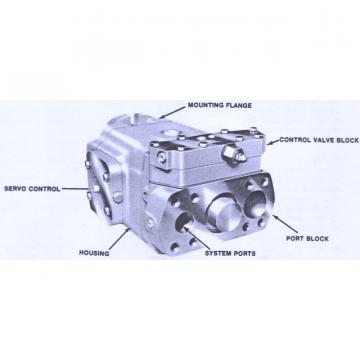 Dansion gold cup piston pump P30P-8L5E-9A4-A00-0B0
Dansion gold cup piston pump P30P-8L5E-9A4-A00-0B0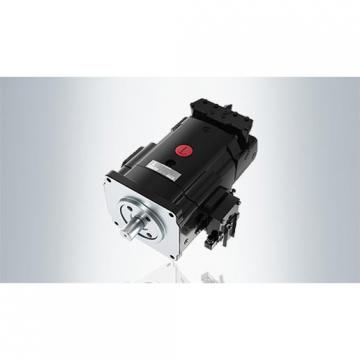 Dansion gold cup piston pump P30P-8L5E-9A2-B00-0C0
Dansion gold cup piston pump P30P-8L5E-9A2-B00-0C0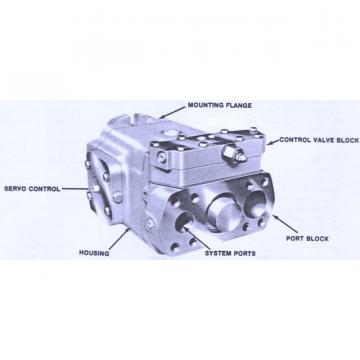 Dansion gold cup piston pump P30L-8L5E-9A7-A0X-B0
Dansion gold cup piston pump P30L-8L5E-9A7-A0X-B0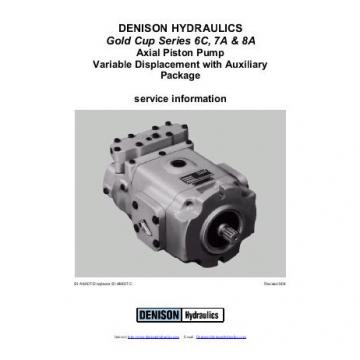 Dansion gold cup piston pump P30P-2R5E-9A7-B00-0C0
Dansion gold cup piston pump P30P-2R5E-9A7-B00-0C0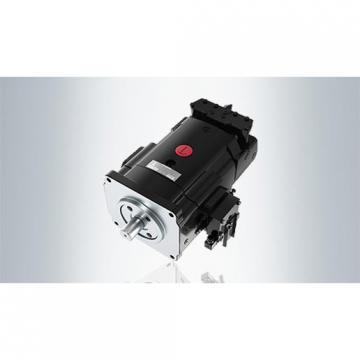 Dansion gold cup piston pump P30L-7R5E-9A2-A0X-D0
Dansion gold cup piston pump P30L-7R5E-9A2-A0X-D0